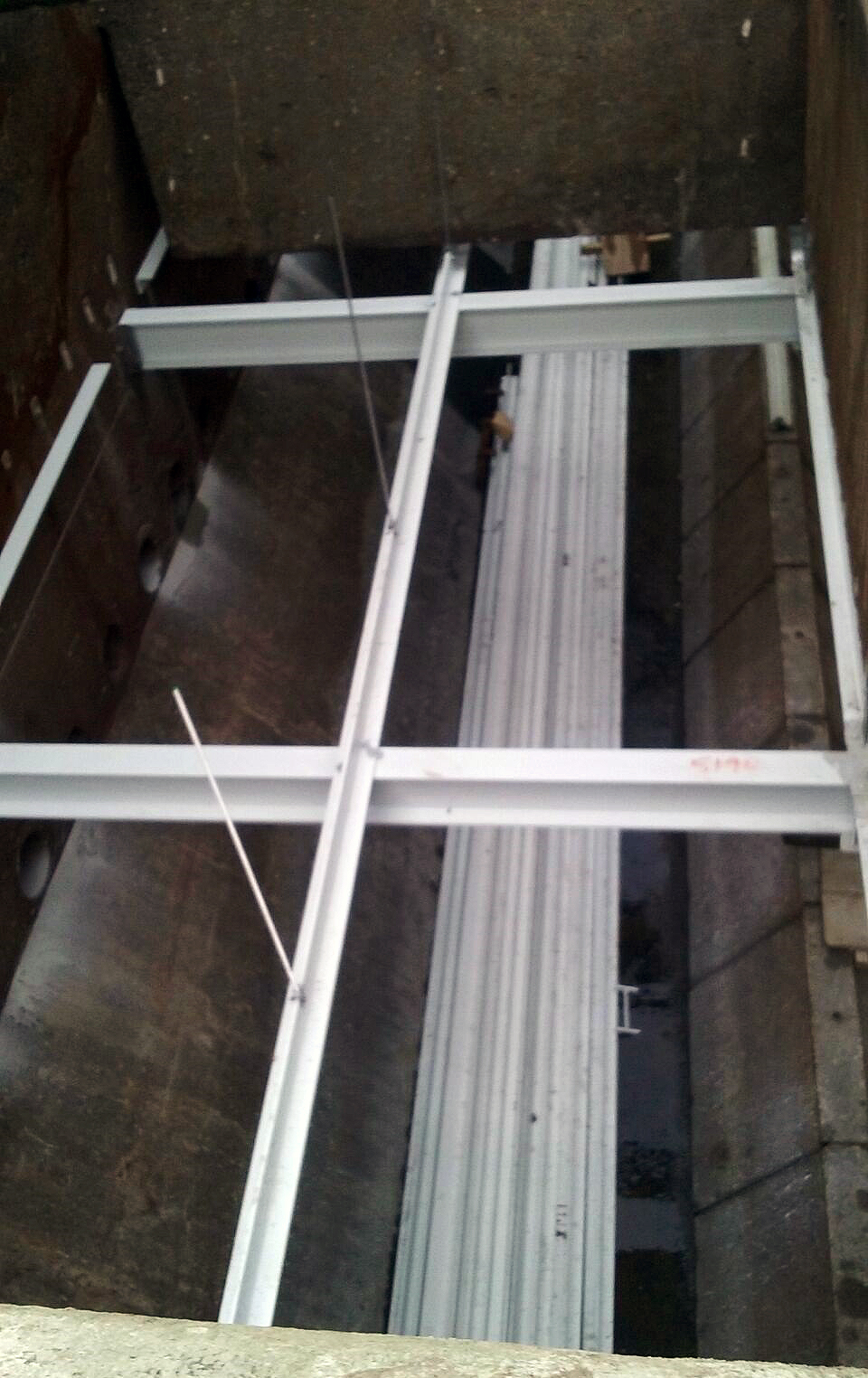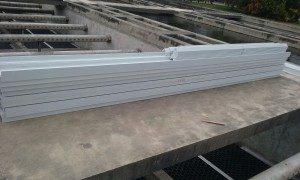
Why is pultruded FRP the best material for support structures in lamella clarifiers?
posted in Technical Articles by TecnoConverting
Galvanized carbon steel or even stainless steel (whether Inox 304 or Inox 316) are often considered a better technical option for the supporting structure of lamellar modules instead of pultruded FRP beams and profiles, but this is a common mistake. We have listed below some of the advantages and disadvantages of both materials when used for this specific purpose:
Galvanized carbon steel:
Advantages:
- Galvanized carbon steel structures cost less than FRP pultruded ones if we compare equivalent profiles or beams, but carbon steel profiles and beams resist to higher loads than pultruded FRP ones.
Disadvantages:
- Corrosion: even if the structure is galvanized, corrosion may appear over time, making it weaker to the point of eventually collapsing.
- Impossibility of modifying the structure: it is impossible to proceed to any drilling, welding or cutting of the beams because once the structure has been galvanized, the parts being modified also need to be galvanized. The only alternative is to use paint, but with time such modifications will become corrosion points.
AISI-304 – AISI-316 Stainless Steel:
Advantages:
- If we compare two exact same structures, the one made of stainless steel will resist higher loads than the pultruded FRP one.
Disadvantages:
- Stainless steel, regardless of its quality (Inox-304 or Inox-316) is always more expensive than pultruded FRP.
- Although the steel is qualified as stainless, this is not completely true: Inox-304 qualities get corroded in environments containing hydrogen sulphide or salts. The same happens with Inox-316 qualities, which, in environments containing high concentrations of acids or salts, also end up showing signs of corrosion.
- When designing the structure of a lamella clarifier, the profiles are sized not only to be able to support the loads defined by our technical department, but also to make sure that the modules are steady and do not fall out of the structure. This is the reason why it is very difficult to find the equivalent in stainless steel of pultruded FRP beams. Besides, not all beam profiles are available in stainless steel on the market, which means that they would have to be manufactured on purpose, further increasing the cost of the structure.
- Due to their weight, stainless steel supporting structures are more expensive to handle and assemble than pultruded FRP structures (because a crane is required to handle the profiles). For example, not being able to drill holes makes the installation of the antiflotation system highly time-consuming as it is necessary to pass the drill 3 times just to make one hole for one M10 screw.

PULTRUDED FRP:
Advantages:
- It costs considerably less than stainless steel, regardless of the quality of the latter.
- It is completely ANTI-CORROSIVE and this is guaranteed for life: there will never be any sign of corrosion at any moment.
- It is very easy to assemble, handle and install.
- When comparing two exact same structures, the one made of stainless steel will resist higher loads than the pultruded FRP one.
- Delivery is practically immediate.
- If we consider two equivalent profiles or beams –for example two IPN 100–, the resistance per meter of length is lower for FRP than for metal. The metal IPN100 beam will resist a higher load than the pultruded IPN100.
- The previous point makes structural calculations necessary to ensure a minimum of 50% of sludge load, or even 100%, depending on the project specifications.
